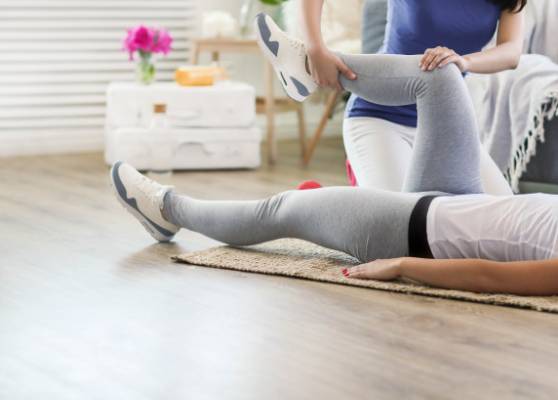Sports injuries occur while participating in organized sports, competitions, training sessions or organized fitness activities.According to the IOC manual of sports injuries (2012) a sports injury may be defined as “damage to the tissues of the body that occurs as a result of sport or exercise.” Overtraining, lack of conditioning, and inappropriate technique of performing a certain task leads to sport injuries. Neglecting to warm up prior to exercising or playing any physical sports also increases the risk of injuries.Common high-injury risk sports are football or soccer, basketball, cricket, volleyball, skiing and tennis. Sports injuries result from acute trauma or repetitive stress associated with athletic activities; and can affect bones, soft tissues (ligaments, muscles and tendons) or other organs like the heart, lungs and eyes.
Some of the more common sports injuries include:
- Bruises – a blow can cause small bleeds into the skin.
- Cuts and abrasions – are usually caused by falls. The knees and hands are particularly prone.
- Concussion – mild reversible brain injury from a blow to the head, which may be associated with loss of consciousness. Symptoms include headache, dizziness and short-term memory loss.
- Dehydration – losing too much fluid can lead to heat exhaustion and heat stroke.
- Sprain – Stretching or tearing of ligaments, the fibrous tissue that connects bones and joints. Symptoms include pain, swelling and stiffness.
- Strain –stretching or tearing of a muscle or a tissue connecting muscle to bone.Symptoms include pain, swelling and bruising.
- Dental damage – a blow to the jaw can crack, break or dislodge teeth.
- Nose injuries – either blood nose or broken nose, are caused by a direct blow.
- Stress fractures – particularly in the lower limbs. The impact of repeated jumping or running on hard surfaces can eventually stress and crack bone.
Sports injuries treatment is better dealt with the help of sports physiotherapy, which is the particular branch of physiotherapy which manages injuries and physical issues associated with athletes. The primary aim of physiotherapy in injury rehabilitation is to treat and fully rehabilitate the athlete post-injury or post-operation to prevent further injury and to make the athlete return to the sport within the shortest possible time. Sports physiotherapists have sports specific knowledge and as such are better apt in helping the athletes make rapid recovery. A strong athlete–physiotherapist relationship is necessary for effective treatment and shaping of athletes’ expectations of injury rehabilitation.
The main goals of physiotherapy and rehabilitation in sports injury cases include:
- Planning exercises regimes to help return athlete to pre-injury function at functional site.
- Personalized exercise prescription is used to improve mobility restrictions.
- Preventive injury methods and diagnosis for athletes through screening process and exercise
- Helps achieve peak athletic performance.
- Monitoring of athlete
The role of physiotherapy in the sports has expanded over the years. Sports physiotherapists provide a variety of services to support the health goals. Along with managing a wide range of injuries and health issues, they prescribe exercise programs that utilize strength and cardiovascular training. The physical assessment performed by sports physiotherapist is critical to achieving a customized exercise program. A sports physiotherapist is involved with sports persons in various settings such as in clinics, with training and touring team, and during competitions. The role and responsibility in each setting varies considerably. While the treatment of injuries and facilitating recovery from physical and psychological fatigue remains the major area of intervention, of late the value of physiotherapy in prevention of injuries is fast receiving attention. Many a time physiotherapist remains the only member of the medical team during competition and tournaments and it becomes his responsibility to identify medical emergencies and offer first aid. Therapist travelling with team has the additional responsibility of looking after the common medical and nutritional and psychological needs of the players besides maintaining the optimum arousal level.
Role of physiotherapist in different settings
| Sn. | Setting | Role |
| 1 | Clinic | Reduce symptom Prevent recurrence Blunt the effect of detraining |
| 2 | Training team | Identify injury prone athlete Design and implement preventive strategy Guide on warm up , stretching , conditioning Facilitate recovery |
| 3 | Touring team | Identify and manage common medical problems of the athlete Look after the medical and nutritional need Reduce stress Maintain optimal arousal level Treat musculoskeletal injuries |
| 4 | Competition venue | Identify emergencies and conditions requiring referral Provide first aid Treat musculoskeletal injuries |





